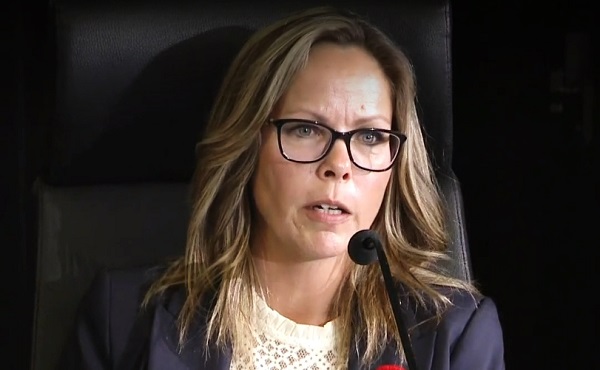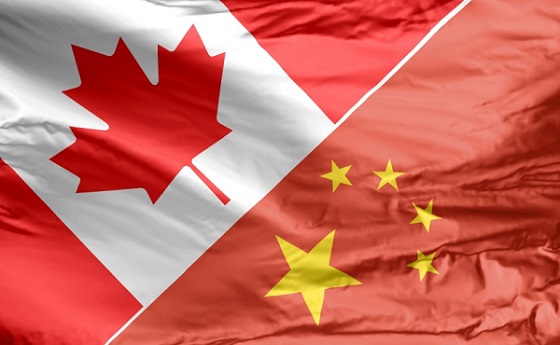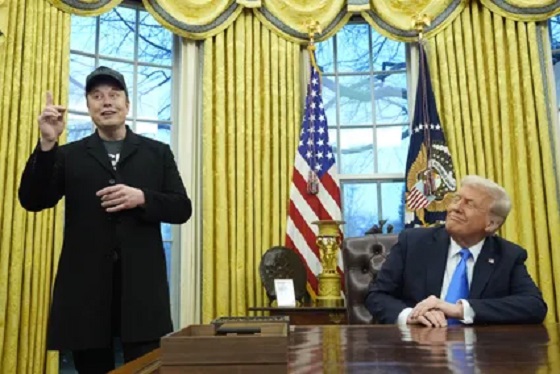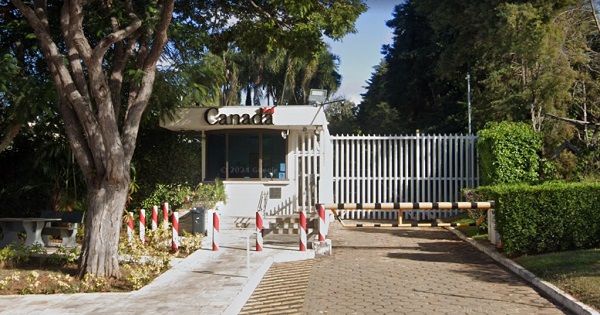COVID-19
Federal Covid Inquiry Finds Public Trust Plummeted

From the Brownstone Institute
By
There is nothing like aggressively wresting human and civil rights away from a population to forcibly impose rules that fly in the face of available evidence, whilst censoring those who try to point this out, and refusing to reveal information on which your rules are based, to bottom out trust in the population at large.
In a report handed down Tuesday, Australia’s federal Covid Inquiry found that extreme public health restrictions, coupled with a lack of transparency about the evidence informing these decisions, has led to a major slide in public trust.
Apparently we need experts and a federal inquiry to tell us the bleeding obvious.
This, by the way, is not a Covid inquiry “like a royal commission,” as was promised by Prime Minister Anthony Albanese prior to his election, but is the toothless ‘royal commission lite’ alternative put forward by Albanese after he got into power.
From the Australian,
“The long-awaited report into Australia’s handling of the Covid-19 pandemic has lashed state premiers for fuelling distrust and confusion, and for adopting draconian border closures that lacked consistency and compassion…
“In the report, the panel argued the need for transparency in future pandemic responses after “economic, social and mental health and human rights impacts were not always understood or considered” in 2020.”
That’s putting it lightly.
Economic, social and mental health, and human rights impacts weren’t considered at all.
That’s why the Queensland Supreme Court ruled that Covid vaccine mandates enforced by the Police Commissioner were unlawful. Justice Glenn Martin held that the Police Commissioner “did not consider the human rights ramifications” before issuing the Covid workplace vaccination directive within the Queensland Police Service (QPS).
When asked about potential human rights abuses caused by his government’s heavy-handed Covid response, former Victorian Premier Dan Andrews retorted, “Seriously? One more comment about human rights – honestly.”
In one egregious case, the Ombudsman determined that the Andrews Government had “breached human rights” by confining over 3,000 Melburnians to nine tower blocks, under police guard, for up to two weeks.
Back to the Australian,
“[The report] lashed “control measures” instituted by state and federal authorities without sufficient explanation.
“This fed the perception that the government did not trust the public to understand or interpret the information correctly and contributed to the decrease in trust,” the summary reads.
“It was the mandating of public health restrictions, especially vaccination, that had the biggest negative impact on trust. The combination of mandatory measures and the perception people had that they were unable to criticize or question government decisions and policies has contributed to non‑mandated vaccination rates falling to dangerously low levels.”
This is absolutely the case. The hashtag I used the most on social media during Australia’s Covid response was, ‘make it make sense.’
There is nothing like aggressively wresting human and civil rights away from a population to forcibly impose rules that fly in the face of available evidence, whilst censoring those who try to point this out, and refusing to reveal information on which your rules are based, to bottom out trust in the population at large.
The biggest failure by far was the silver bullet vaccines that authorities mandated in order to prevent infection and transmission, when they were not tested for such endpoints, and observational data showed they waned in effectiveness after a month or two at best.
Safety surveillance databases exploded with adverse event reporting rates never seen before, yet authorities still insist these are definitely the best, most safe and effective products ever deployed on the population.
It’s small wonder then that fewer than 4% of Australians under the age of 65 have bothered to get a booster in the past six months.
But the nonsensical Covid response wasn’t just limited to the failure of the vaccines to deliver as promised. A few other rules that made no sense:
You need to be protected by a mask standing up, but if sitting at a table you are safe.
Mandatory vaccines are voluntary.
Rapid antigen tests are illegal – wait, now they’re mandatory.
Footballers can cross the border safely but children wishing to visit a dying parent cannot.
And so on, and so on, and so on.
To this day, federal, state, and territory governments have blocked all attempts to access the health advice on which their extremist policies were based.
In an address on Tuesday, Health Minister Mark Butler admitted that “heavy-handed” policies implemented during the pandemic eroded trust, and that “many of the measures taken during Covid-19 are unlikely to be accepted by the population again.”
But don’t think for one second that means they won’t try it again.
Just as the Queensland Government took its Supreme Court loss as a signal that it needs to add a ‘considering human rights’ box-ticking exercise next time it breaches human rights to bring in a mandate, the federal Covid Inquiry report recommends ways to do the whole shebang next time, but better.
That includes more spending, fast-tracking the new Australian Centre for Disease Control (CDC, which the government has invested $251.7 million to establish), and better global coordination, particularly with the World Health Organization’s One Health policy.
The report recommends transparent, evidence-based decision-making next time around, but in light of my recent interactions with the Therapeutic Goods Administration (TGA), forgive me for considering this a pipe dream under the political status quo.
Butler said that the report was not about laying blame for individual decisions, but was rather about learning lessons. In other words, there will be no accountability.
Instead, Covid premiers and leaders have been awarded medals and cushy jobs. Most recently, Andrews was appointed to the lucrative role of chairman of Orygen, a youth mental health not-for-profit, to collective outrage.
A good thing that has come out of the report is that government overreach on vaccination mandates has been squarely blamed for a drop in vaccination rates in Australia more generally (not just for Covid vaccines).
“The erosion of trust is not only constraining our ability to respond to a pandemic when it next occurs, but it’s already, we know, bled into the performance of our vaccination programs, including our childhood vaccination programs,” said Butler.
“Since the beginning of Covid…we’ve seen a reduction of seven or eight percentage points in participation in the whooping cough vaccination program for under fives and measles vaccination program for under fives, which means we are well below herd immunity levels for those two really important diseases.”
Nice to see a politician finally admit the role of government in driving this trend, which is too often blamed on the boogeyman of ‘misinformation.’
Read the COVID-19 Response Inquiry Report.
Read the COVID-19 Response Inquiry Report Summary.
For further commentary, check out Alison Bevege’s response to the report on her Substack, Letters from Australia.
Republished from the author’s Substack
COVID-19
Canadian veteran challenges conviction for guarding War Memorial during Freedom Convoy

From LifeSiteNews
When the convoy first came to Ottawa, allegations were floated that the memorial had been desecrated. After learning of this, Evely quickly organized a group of veterans to stand guard around the clock to protect the area.
A Canadian veteran appealed to the Ontario courts after he was convicted for organizing a guard around the National War Memorial during the Freedom Convoy.
In an October press release, the Justice Centre for Constitutional Freedoms (JCCF) announced that an appeal has been filed in the Ontario Court of Appeals on behalf of Master Warrant Officer (Ret’d) Jeffrey Evely over his conviction for mischief and obstructing police while on his way to guard the Ottawa War Memorial during the 2022 Freedom Convoy.
“By locking down large sections of downtown Ottawa, the police were effectively preventing all civilians from accessing public areas and greatly exceeded their powers under the common law,” constitutional lawyer Chris Fleury explained.
“This case raises issues that have implications for protests across the province and the country. We are hopeful that the Ontario Court of Appeal will agree and grant leave to appeal,” he added.
The appeal argues that police overstepped their authority in their response to the 2022 protest of COVID mandates. Police actions at the time included locking down the Ottawa core, establishing checkpoints, and arresting protesters.
In September 2024, Everly was convicted of mischief and obstruction after his involvement in the 2022 Freedom Convoy, which protested COVID mandates by gathering Canadians in front of Parliament in Ottawa.
As LifeSiteNews previously reported, when the convoy first came to Ottawa, allegations were floated that the memorial had been desecrated. After learning of this, Evely quickly organized a group of veterans to stand guard around the clock to protect the area.
However, under former Prime Minister Justin Trudeau’s use of the Emergencies Act, many parts of downtown Ottawa were blocked to the public, and a vigilant police force roamed the streets.
It was during this time that Evely was arrested for entering a closed off section of downtown Ottawa during the early hours of February 19, 2022. He had been on his way to take the 4:25 a.m. shift protecting the Ottawa War Memorial.
As Evely walked to the memorial, he was allegedly told to stop by police. According to the police, Evely “ran for a short distance before being confronted by two additional police officers.”
He was forcibly pushed to the ground, landing face first. The veteran was then arrested and charged with mischief and obstructing police.
At the time, the use of the EA was justified by claims that the protest was “violent,” a claim that has still gone unsubstantiated.
In fact, videos of the protest against COVID regulations and shot mandates show Canadians from across the country gathering outside Parliament engaged in dancing, street hockey, and other family-friendly activities.
Indeed, the only acts of violence caught on video were carried out against the protesters after the Trudeau government directed police to end the protest. One such video showed an elderly women being trampled by a police horse.
While the officers’ actions were originally sanctioned under the EA, Federal Court Justice Richard Mosley ruled that Trudeau was “not justified” in invoking the EA, forcing Crown prosecutors to adopt a different strategy.
Now, Crown prosecutors allege that the common law granted police the authority to stop and detain Evely, regardless of the EA.
However, Evely and his lawyers have challenged this argument under section 9 of the Canadian Charter of Rights and Freedoms, insisting that his “arrest and detention were arbitrary.”
Earlier this month, Freedom Convoy organizers Tamara Lich and Chris Barber were sentenced to 18-month house arrest after a harrowing 25-month trial process. Many have condemned the sentence, warning it amounts to “political persecution” of those who stand up to the Liberal government.
COVID-19
Freedom Convoy leader Tamara Lich says ‘I am not to leave the house’ while serving sentence

From LifeSiteNews
‘I was hoping to be able to drop off and pick up my grandsons from school, but apparently that request will have to go to a judge’
Freedom Convoy leader Tamara Lich detailed her restrictive house arrest conditions, revealing she is “not” able to leave her house or even pick up her grandkids from school without permission from the state.
Lich wrote in a X post on Wednesday that this past Tuesday was her first meeting with her probation officer, whom she described as “fair and efficient,” adding that she was handed the conditions set out by the judge.
“I was hoping to be able to drop off and pick up my grandsons from school, but apparently that request will have to go to a judge under a variation application, so we’ll just leave everything as is for now,” she wrote.
Lich noted that she has another interview with her probation officer next week to “assess the level of risk I pose to re-offend.”
“It sounds like it’ll basically be a questionnaire to assess my mental state and any dangers I may pose to society,” she said.
While it is common for those on house arrest to have to ask for permission to leave their house, sometimes arrangements can be made otherwise.
On October 7, Ontario Court Justice Heather Perkins-McVey sentenced Lich and Chris Barber to 18 months’ house arrest after being convicted earlier in the year convicted of “mischief.”
Lich was given 18 months less time already spent in custody, amounting to 15 1/2 months.
As reported by LifeSiteNews, the Canadian government was hoping to put Lich in jail for no less than seven years and Barber for eight years for their roles in the 2022 protests against COVID mandates.
Interestingly, Perkins-McVey said about Lich and Barber during the sentencing, “They came with the noblest of intent and did not advocate for violence.”
Lich said that her probation officer “informed me of the consequences should I breach these conditions, and I am not to leave the house, even for the approved ‘necessities of life’ without contacting her to let her know where I’ll be and for how long,” she wrote.
“She will then provide a letter stating I have been granted permission to be out in society. I’m to have my papers on my person at all times and ready to produce should I be pulled over or seen by law enforcement out and about.”
Lich said that the probation officer did print a letter “before I left, so I could stop at the optometrist and dentist offices on my way home.”
She said that her official release date is January 21, 2027, which she said amounts to “1,799 days after my initial arrest.”
As reported by LifeSiteNews, Lich, reflecting on her recent house arrest verdict, said she has no “remorse” and will not “apologize” for leading a movement that demanded an end to all COVID mandates.
LifeSiteNews reported that Conservative Party leader Pierre Poilievre offered his thoughts on the sentencing, wishing them a “peaceful” life while stopping short of blasting the sentence as his fellow MPs did.
In early 2022, the Freedom Convoy saw thousands of Canadians from coast to coast come to Ottawa to demand an end to COVID mandates in all forms. Despite the peaceful nature of the protest, Trudeau’s government enacted the never-before-used Emergencies Act (EA) on February 14, 2022.
-

 Business2 days ago
Business2 days agoTrans Mountain executive says it’s time to fix the system, expand access, and think like a nation builder
-

 International2 days ago
International2 days agoBiden’s Autopen Orders declared “null and void”
-

 MAiD2 days ago
MAiD2 days agoStudy promotes liver transplants from Canadian euthanasia victims
-

 Business2 days ago
Business2 days agoCanada has given $109 million to Communist China for ‘sustainable development’ since 2015
-

 Internet2 days ago
Internet2 days agoMusk launches Grokipedia to break Wikipedia’s information monopoly
-

 Business2 days ago
Business2 days agoCanada’s combative trade tactics are backfiring
-

 Crime1 day ago
Crime1 day agoPublic Execution of Anti-Cartel Mayor in Michoacán Prompts U.S. Offer to Intervene Against Cartels
-

 Business2 days ago
Business2 days agoYou Won’t Believe What Canada’s Embassy in Brazil Has Been Up To







